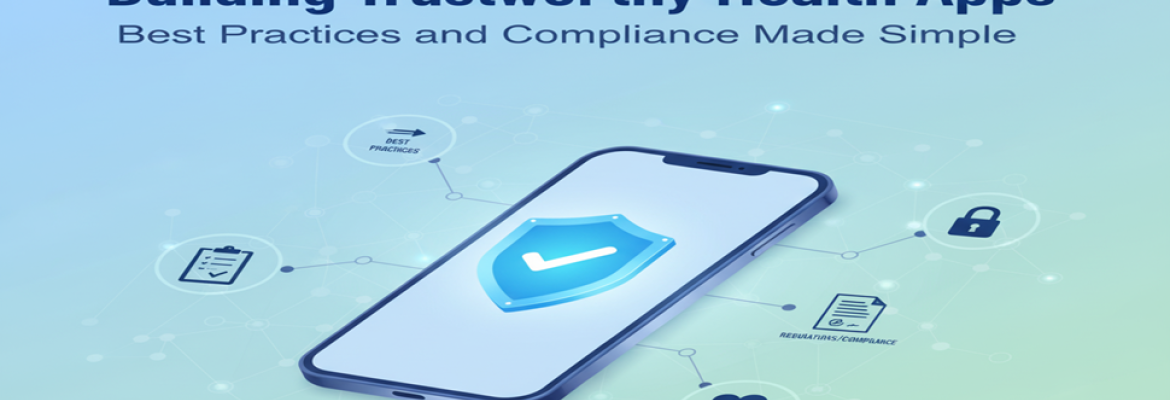
Building Trustworthy Health Apps: Best Practices and Compliance Made Simple
Creating a mobile medical app is not just about features. It’s about trust. People use health apps to book appointments, track symptoms, message their doctor, and sometimes manage long-term conditions. To earn that trust, an app needs to be easy to use, dependable, and built with privacy and safety in mind from day one. When these basics are done right, everything else falls into place.
This guide walks through the essentials: what to build, how to build it well, and how to stay compliant in a space where rules really matter.
Start with the real problem
Great apps solve clear problems. Talk to patients, clinicians, and support staff before writing a single line of code. Map the user journeys: booking, reminders, refills, results, and follow-ups. The aim is simple screens, few steps, and no confusion. Research what similar apps do well and where they fall short, then plan a focused first release instead of trying to do everything at once.
Design for everyone
Accessibility is not optional in healthcare. Use readable text, clear contrast, large tap targets, and voice-friendly flows. Support screen readers and captions for video content. Keep forms short. Save progress if someone gets interrupted. These small touches reduce drop-offs and make care feel closer and more human.
Build the core features that matter
Most strong health apps share a few must-haves:
- Account creation with identity verification and multi-factor login for safety. Keep it simple but secure.
- Appointments with real-time availability, reminders, and easy rescheduling. Cut the back-and-forth and reduce no-shows.
- Secure messaging for quick questions and follow-ups without needing a call every time. Encrypt these conversations end to end.
- Prescription support with medication lists, refill reminders, and pharmacy handoffs when appropriate.
- Telehealth basics: reliable video, chat, and the ability to share images or reports during a consultation.
- Payments that are smooth and secure, whether it’s a copay, subscription, or direct pay.
Put security at the core
Security is not a checklist at the end. It’s built in from the first sketch.
- Encrypt all data in transit and at rest. Treat anything tied to a person as sensitive.
- Give people only the access they need. Log every important action so issues can be traced and fixed fast.
- Test often. Run security reviews, code scans, and penetration tests on a regular schedule. Fix quickly and document what changed.
- Plan for the worst. Have clear steps for handling incidents and notifying users if something goes wrong.
Make compliance part of the build
Rules differ by country, but the idea is the same: protect patient data and be transparent about how it’s used.
- In the US, follow HIPAA if the app handles protected health information. That means policies, training, access controls, encryption, audit logs, and agreements with any vendor that touches health data.
- If the app diagnoses, recommends treatments, analyzes clinical data, or connects to devices, it may be treated as a medical device. That can bring FDA oversight. The sooner this is assessed, the fewer surprises later. Some apps are low risk, while others need 510(k) clearance or more. Plan time for documentation, testing, and quality processes if you’re in scope.
- Serving users in Europe brings GDPR obligations: consent, clear privacy notices, data minimization, deletion rights, and sometimes data localization. Build consent and privacy controls into the product, not as an afterthought.
- Interoperability matters. Support common standards so the app can exchange data with clinics and labs. This reduces manual work and errors and keeps records in sync.
Keep performance and reliability high
Health apps are used at stressful moments. They must work every time.
- Design for low connectivity and older devices when possible. Queue actions offline and sync later for critical flows.
- Monitor crashes, load times, and video quality. Fix the top issues first and communicate improvements in release notes people can understand.
- Scale as usage grows. Plan your backend capacity and test surge scenarios, like flu season spikes or campaign launches.
Respect the details that build trust
Small choices shape how people feel about an app.
- Plain language over technical terms. Explain what’s happening and why, especially around permissions and data use.
- Thoughtful notifications. Send what’s useful and let people choose the rest. Too many alerts drive uninstalls.
- Clear privacy controls. Give users simple ways to see, download, or delete their data and to change consent settings.
Work with the right partners
Most teams rely on vendors for hosting, analytics, messaging, or video.
- Choose providers that support compliance needs and will sign required agreements, like BAAs in the US. Review their security posture and incident history.
- Limit what data you share. Turn off unnecessary tracking, and never send health data to ad networks or social pixels.
Test with real users
Run quiet pilots with a small group before a big launch. Watch how people actually use the app. Fix friction. Tighten copy. Reduce steps. Measure task completion, time to book, and message response times. Real-world feedback beats assumptions every time.
Plan for life after launch
Healthcare changes. Your app should keep up.
- Maintain a clear release cadence with security updates and usability improvements. Document changes for auditors and clinical partners.
- Review permissions regularly and remove anything you don’t need. Less data means less risk.
- Keep training materials fresh for support teams and provider partners. A great app backed by great help builds loyalty.
A medical app succeeds when it feels safe, simple, and respectful. Build for real needs. Protect people’s data. Follow the rules early and often. Do that consistently, and the result is more than an app. It’s a tool people trust in moments that matter.
